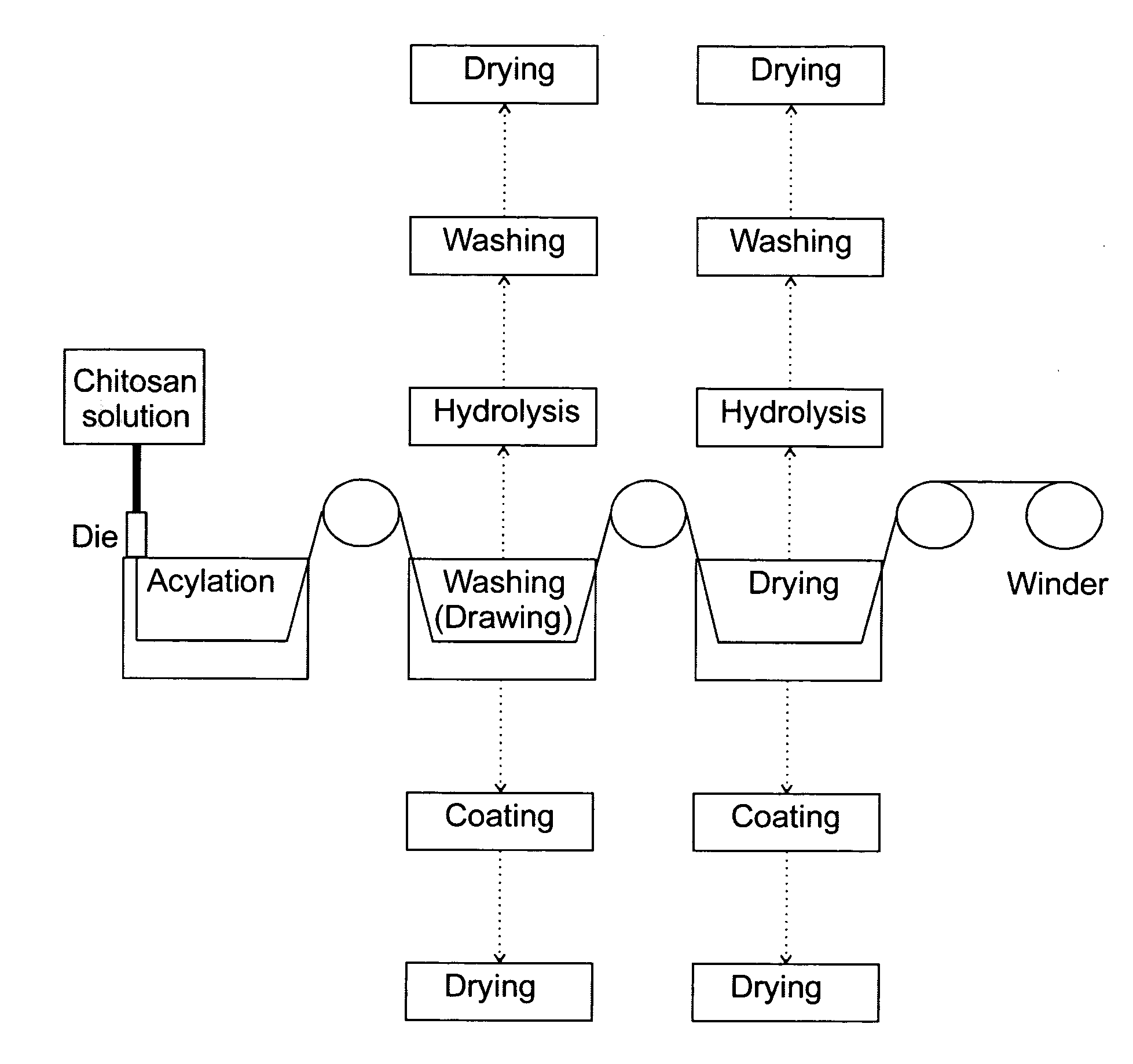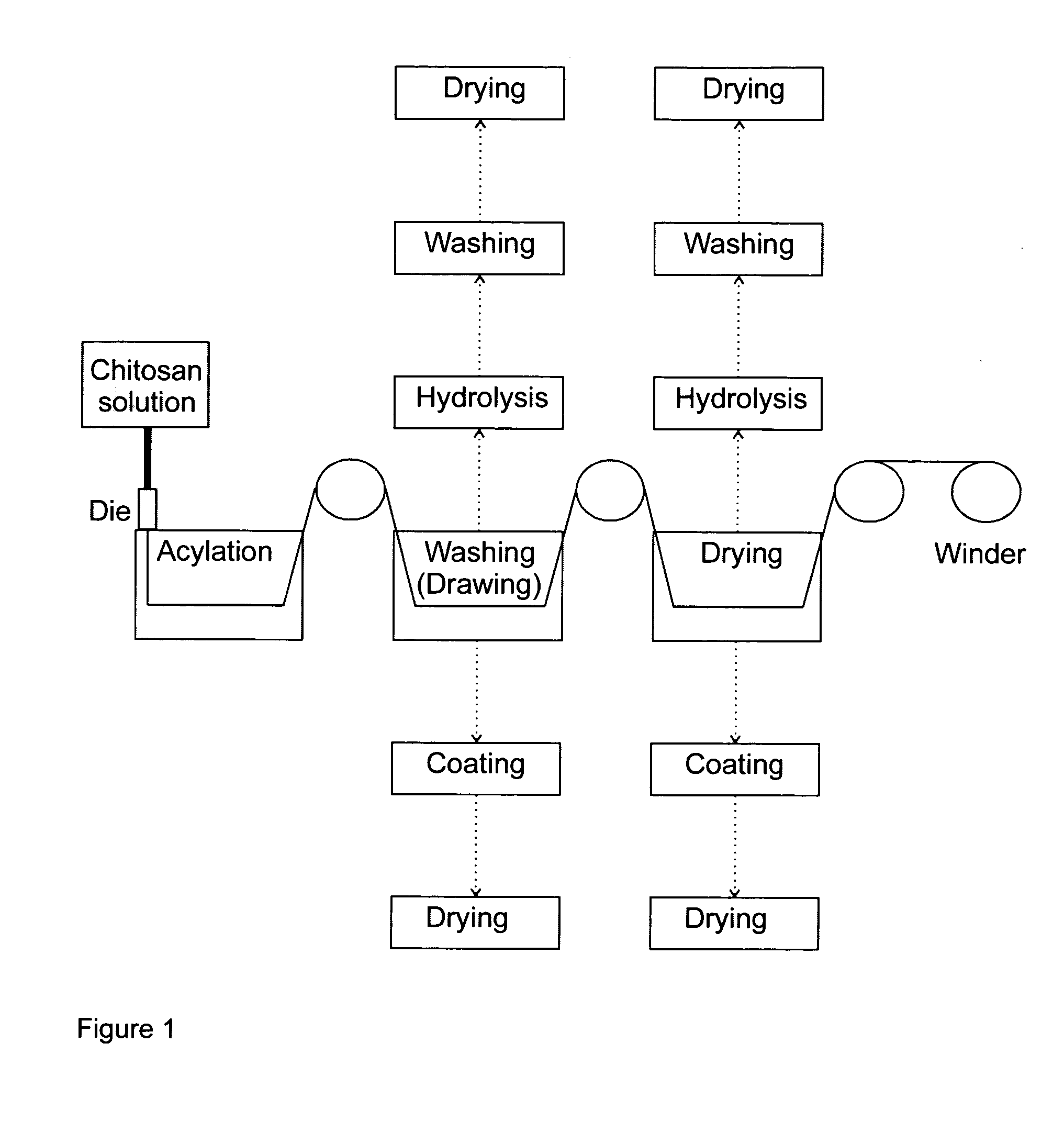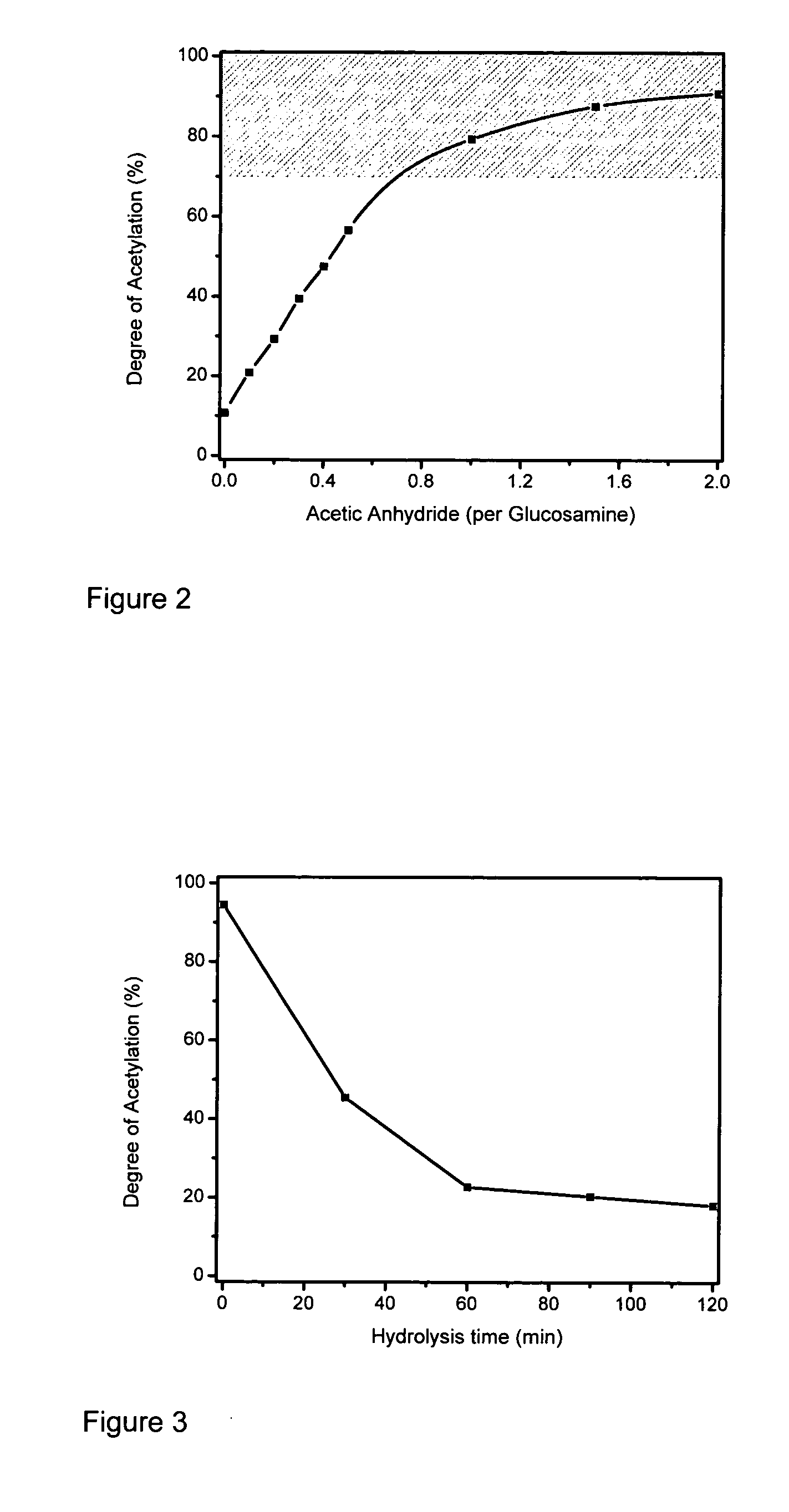Processing of Chitosan and Chitosan Derivatives
a technology of chitosan and chitosan derivatives, which is applied in the direction of catheters, coatings, pharmaceutical non-active ingredients, etc., can solve the problems of limited ability to extrude these polysaccharides in an efficient manner, few products are actually in commercial use, and easy processing, etc., to achieve better method, product and system, and limited control of degradation and dissolution
- Summary
- Abstract
- Description
- Claims
- Application Information
AI Technical Summary
Benefits of technology
Problems solved by technology
Method used
Image
Examples
examples
1. Extrusion of N-acetylchitosan Gel Fibers and Tubes
[0081]A 3% solution of chitosan (degree of acetylation 11%) in 2% aqueous acetic acid was diluted with an equal volume of ethanol. A 0.5 fold molar amount of acetic anhydride was added to the solution. The reaction mixture was filtered and degassed, and extruded through a single-hole spinneret (inner diameter 0.25 mm) into a bath containing 50% acetic anhydride in ethanol. The N-acetylchitosan gel fiber formed was washed with distilled water, and air-dried resulting in an N-acetylchitosan fiber having a diameter of approximately 50 μm. N-Acetylchitosan hollow fibers (tubes) were fabricated in a similar manner, by extruding the reaction mixture through a spinneret comprising an annular ring (outer diameter 2.3 mm, width of the annular gap 0.25 mm) through which the chitosan solution passed, and a central bore (diameter 1.5 mm) through which a core liquid consisting of 50% acetic anhydride in ethanol was delivered. The N-acetylchito...
PUM
| Property | Measurement | Unit |
|---|---|---|
| viscosity | aaaaa | aaaaa |
| viscosity | aaaaa | aaaaa |
| temperatures | aaaaa | aaaaa |
Abstract
Description
Claims
Application Information
 Login to View More
Login to View More - R&D
- Intellectual Property
- Life Sciences
- Materials
- Tech Scout
- Unparalleled Data Quality
- Higher Quality Content
- 60% Fewer Hallucinations
Browse by: Latest US Patents, China's latest patents, Technical Efficacy Thesaurus, Application Domain, Technology Topic, Popular Technical Reports.
© 2025 PatSnap. All rights reserved.Legal|Privacy policy|Modern Slavery Act Transparency Statement|Sitemap|About US| Contact US: help@patsnap.com



